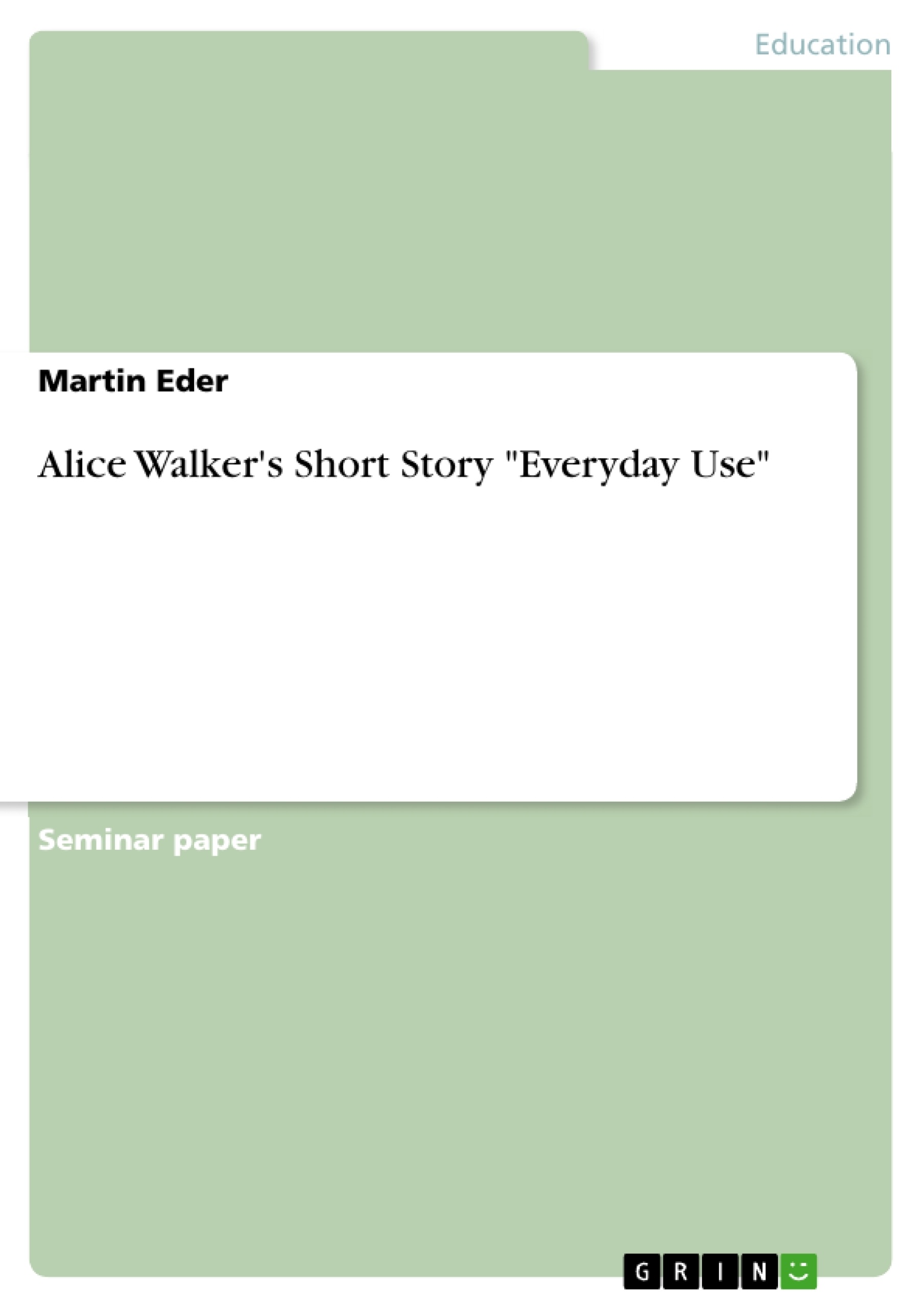This term paper provides the concept of a teaching unit concerning the short story Everyday Use by Alice Walker. Apart from the different analyses there should also be given an overview of recommendations and possibilities that could be used for creating a teaching unit.
Everyday Use was published in 1973 and is basically about a black mother and her two daughters. Whereas one daughter, Dee, had the possibility to go to school and visit college, Maggie, the younger daughter, still lives with her mother and did not enjoy higher education. One day, Dee, who is accompanied by her boyfriend, visits her mother and her sister at her old home. As the story continues it becomes clear that obvious differences have developed between the opinions of Dee and her mother alternatively her sister.
Table of Contents
- Introduction
- Summarisation of the content
- Technical analysis/literary analysis
- Didactical analysis
- Pre-reading phase
- While-reading phase
- Post-reading phase
- Conclusion
- Works cited
Objectives and Key Themes
This term paper presents a teaching unit centered on the short story "Everyday Use" by Alice Walker. The paper analyzes the story's content, technical aspects, and potential pedagogical applications. Recommendations and possibilities for constructing a teaching unit are explored.
- Cultural heritage and identity of Afro-Americans in the context of the Civil Rights movement
- The significance of family dynamics and generational differences in shaping cultural identity
- The role of tradition and modernity in the lives of African Americans
- The impact of historical events such as slavery and segregation on contemporary black identity
- The contrasting values and perspectives of the characters and their implications for cultural understanding
Chapter Summaries
- Introduction: This section introduces the concept of the teaching unit, outlining its purpose and scope. It focuses on the short story "Everyday Use" by Alice Walker and emphasizes the integration of different analyses and recommendations for creating a teaching unit.
- Summarisation of the content: This chapter provides a brief overview of the story's narrative, highlighting the central characters and the main conflicts that drive the plot. It introduces the mother and her two daughters, Dee and Maggie, and the contrasting values and lifestyles they represent. It also hints at the role of cultural heritage in the story.
- Technical analysis/literary analysis: This chapter delves into the story's technical and literary aspects, examining the narrative perspective, characterization, and symbolism. It explores the significance of Mama's voice as an I-narrator and the contrasting descriptions of Dee and Maggie. It also analyzes the symbolic implications of the characters' actions and the context of the story.
- Didactical analysis: This chapter focuses on the pedagogical implications of the story, exploring its suitability for classroom use. It discusses potential learning objectives and outlines the key themes and concepts that can be addressed in a teaching unit.
- Methodical analysis: This section outlines the different phases of a potential teaching unit based on the short story. It presents practical suggestions for pre-reading activities, during-reading activities, and post-reading activities. The focus is on engaging students with the text in a meaningful and interactive way.
Keywords
Key terms and concepts explored in the paper include "Everyday Use," Alice Walker, Afro-American heritage, cultural identity, family dynamics, generational differences, Black Power movement, tradition, modernity, slavery, segregation, narrative perspective, characterization, symbolism, and pedagogical applications.
- Quote paper
- Martin Eder (Author), 2011, Alice Walker's Short Story "Everyday Use", Munich, GRIN Verlag, https://www.grin.com/document/281357




